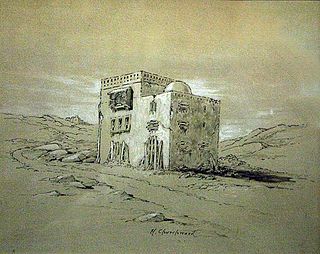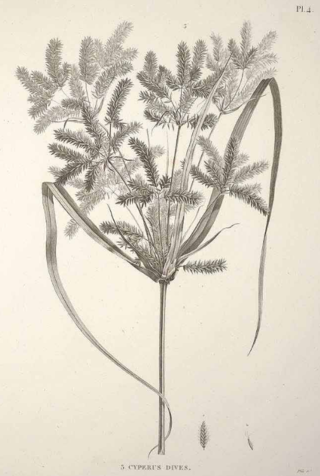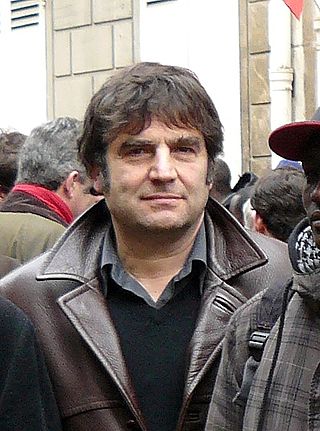Related Research Articles

Nicolas Lémery, French chemist, was born at Rouen. He was one of the first to develop theories on acid-base chemistry.
La Panhypocrisiade, ou la comédie infernale du seizième siècle is a poem in sixteen cantos by Louis Jean Népomucène Lemercier, composed essentially under the French Consulate but not published until 1819.
Georges Politzer was a French philosopher and Marxist theoretician of Hungarian Jewish origin, affectionately referred to by some as the "red-headed philosopher". He was a native of Oradea, a city in present-day Romania. He was murdered in the Holocaust.
Clown society is a term used in anthropology and sociology for an organization of comedic entertainers who have a formalized role in a culture or society.

40 chansons d'or is a double-CD by Charles Aznavour, released in 1994 on EMI Records. It was reissued in 1996 with a different track listing.
Jean-François Féraud was a French Jesuit and grammarian.

"Trois Villes saintes" is an essay written by French Nobel laureate J. M. G. Le Clézio.

Sculpture in Brussels has been created since the Middle Ages to the present day. It began to shine in the second half of the 14th century with Claus Sluter's arrival in Brussels and the construction of the city's Town Hall. It continued without interruption and reached its momentum during 15th and 16th centuries. Until the end of the Ancien Régime, sculptors in Brussels were members of the Quatre Couronnés Guild of the Nation of St Nicholas and then the Royal Academy of Fine Arts.

Antoine-François Delandine, was a French writer.
Jean Cazeneuve was a French sociologist and anthropologist. Apart from being a scholar, he has been involved with Radio and TV at the executive level; from 1964 till 1974 he has been president of the French public Radio and TV agency (ORTF), after which he has been chairman of TF1, the first French national-wide channel, till 1978. He joined the Académie des Sciences Morales et Politiques in 1973, of which became president in 1983.

Philippe Monneret is a French linguist. He is Professor of Linguistics at University of Burgundy since 2004 and at Paris-Sorbonne University since 2015. In 2003, he founded Les Cahiers de Linguistique Analogique and created the field of analogical linguistics. He is a member of the editorial board of «Romanica Olomucensia».

Les Feuilles d'Automne is a collection of poems written by Victor Hugo, and published in 1831. It contains a multitude of poems, six of which are especially known as Soleils Couchants.
Joseph-François-Nicolas Dusaulchoy de Bergemont was a French playwright, writer and journalist.

Joseph Servières was an early 19th-century French playwright.

Les Djinns is one of the most famous poems of French author Victor Hugo, published in 1829 in his collection Les Orientales.

Cyperus dives is a plant in the genus Cyperus of the sedge family, Cyperaceae, which is found from south-west Syria to Africa, and from Pakistan to Vietnam.

Romain-Pierre Charpentier, known professionally as Romain Goupil, is a French filmmaker. He was a college leader during the May 1968 civil unrest in France and was for a long time a trotskyist militant. During the 2000s decade he aligned with the positions of the Cercle de l'Oratoire, and supported Emmanuel Macron in 2017.
Gilbert Garcin was a French photographer.
Dealbanisation is a term used in historiographical and political discourse as the process of denationalisation of Albanians which was initiated by the Kingdom of Serbia after the annexation of Kosovo in 1912. The process continued to 1918 and was adopted by the Kingdom of Serbs, Croats and Slovenes against the Albanian populations of Kosovo between 1918 and 1938. The Kingdom of Serbs, Croats and Slovenes resisted the Kachak movement and used Serbo-Montenegrin colonisers in an attempt to "de-albanize" areas inhabited by Albanians. There is an integration process among Albanian immigrants in Greece that can be perhaps termed as 'de-albanisation'. In Albanian historiography the term is also used in order to refer to the process of "dealbanization" of Albanian historical figures in Balkan historiography. In post-Yugoslav countries with significant Albanian minorities, the term is used in a form which alludes to the ethnic slur Šiptar, dešiptarizacija, as a nationalist slogan directed against Albanian communities.

The Neirab steles are two 8th-century BC steles with Aramaic inscriptions found in 1891 in Al-Nayrab near Aleppo, Syria. They are currently in the Louvre. They were discovered in 1891 and acquired by Charles Simon Clermont-Ganneau for the Louvre on behalf of the Commission of the Corpus Inscriptionum Semiticarum. The steles are made of black basalt, and the inscriptions note that they were funerary steles. The inscriptions are known as KAI 225 and KAI 226.
References
- Jean Cazeneuve (1957) Les dieux dansent à Cibola: le Shalako des indiens zuñis, pp. 242–254. English version translated by Madeleine Turrell Rodack: The gods dance at Cibola.
- Republished in 1993 as Les Indiens Zunis — Les dieux dansent à Cibola, éditions du Rocher/Nuage Rouge, preface by Olivier Delavault. Excerpts on sacred clowns from the 1993 edition: Quand les Katchinas dansent a Cibola(2). DANSEURS MASQUES ET CLOWNS SACRES DES ZUNIS
- Gilbert Durand (1960) Les structures anthropologiques de l'imaginaire
- Gilbert Durand (1984) 1964 L'imagination symbolique also found in SUP.: Initiation philosophique (1954)
- Revue de métaphysique et de morale: Volume 65 (1960) (Volumes 64-65, Volume 65) Review of Cazeneuve (1957), pp. 117-seq
